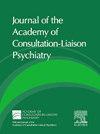Hallucinations and Related Perceptual Phenomena in Systemic Lupus Erythematosus and Inflammatory Arthritis: A Cross-sectional Mixed-Methods Study
IF 2.5
4区 心理学
Q2 PSYCHIATRY
Journal of the Academy of Consultation-Liaison Psychiatry
Pub Date : 2025-09-01
DOI:10.1016/j.jaclp.2025.05.005
引用次数: 0
Abstract
Background
The INSPIRE (Investigating Neuropsychiatric Symptom Prevalence and Impact in Rheumatology Patient Experiences) research project explored neuropsychiatric symptoms associated with Systemic Autoimmune Rheumatic Diseases (SARDs), identifying hallucinatory experiences as lesser known but impactful symptoms. Following consultations with clinicians and patients, areas of focus included the prevalence, sensory modalities, insight, timings, and emotional valence of hallucinations in SARDs. Our previous research shows that hallucinations and related perceptual phenomena often go unreported and unrecognised in clinical settings with SARD patients.
Objective
This study analyses and compares hallucination experiences in patients with systemic lupus erythematosus (SLE) and inflammatory arthritis (IA). We evaluated prevalence, modalities, insight, emotional valence, and timings of hallucinations.
Methods
Quantitative data from cross-sectional surveys (n = 1022) and qualitative data from interviews were integrated using mixed methods. Quantitative data are presented descriptively and comparatively (using Pearson's χ2 tests), and qualitative data were analyzed thematically.
Results
SLE patients reported a greater lifetime prevalence of hallucinations than IA patients, with significant differences in visual (12% vs 6%), olfactory (11% vs 6%), tactile (11% vs 5%), and presence (10% vs 3%) modalities (all P < 0.005). Auditory hallucinations were not significantly more frequent in SLE (8%) than IA (5%) (P = 0.071). Consistent lack of insight into hallucinations was rare (11% of SLE and 4% of IA patients). SLE patients were significantly more likely to experience hallucinations in contexts unrelated to periods of sleep transition than IA patients (P = 0.020). Recognizing hallucinations as SARD symptoms helped patients develop positive coping mechanisms and reduced distress. However, fear of clinician judgment, stigma, and misdiagnoses discouraged reporting.
Conclusions
The higher prevalence in SLE likely reflects its greater direct impact of SLE (compared to IA) on the brain. Hallucinatory experiences in SARDs aligned more closely with neurological diseases than primary psychotic disorders. Understanding the varying modalities and contexts of hallucinations as potential direct effects of SLE could improve attribution, treatment, and coping strategies, while reducing stigma and fostering open communication between patients and clinicians.
系统性红斑狼疮和炎性关节炎的幻觉及相关知觉现象:一项横断面混合方法研究。
背景:INSPIRE研究项目探讨了与系统性自身免疫性风湿病(SARDs)相关的神经精神症状,确定了幻觉体验是一种鲜为人知但有影响的症状。在与临床医生和患者协商后,重点领域包括急性呼吸窘迫综合征幻觉的患病率、感觉模式、洞察力、时间和情绪效价。我们之前的研究表明,在临床环境中,SARD患者的幻觉和相关的知觉现象往往没有被报告和识别。目的:分析比较系统性红斑狼疮(SLE)和炎性关节炎(IA)患者的幻觉经历。我们评估了幻觉的普遍性、形式、洞察力、情绪效价和时间。方法:采用混合方法整合来自横断面调查的定量数据(n=1022)和来自访谈的定性数据。定量数据采用描述性和比较(使用Pearson χ2检验),定性数据采用主题分析。结果:与IA患者相比,SLE患者报告的幻觉终生患病率更高,在视觉(12%比6%)、嗅觉(11%比6%)、触觉(11%比5%)和存在(10%比3%)方式上存在显著差异。结论:SLE的较高患病率可能反映了SLE(与IA相比)对大脑的直接影响更大。急性呼吸窘迫综合征患者的幻觉经历与神经系统疾病的关系比与原发性精神障碍的关系更密切。了解幻觉作为SLE潜在直接影响的不同形式和背景,可以改善归因、治疗和应对策略,同时减少耻辱感,促进患者和临床医生之间的开放沟通。
本文章由计算机程序翻译,如有差异,请以英文原文为准。
求助全文
约1分钟内获得全文
求助全文
来源期刊

Journal of the Academy of Consultation-Liaison Psychiatry
Psychology-Clinical Psychology
CiteScore
5.80
自引率
13.00%
发文量
378
审稿时长
50 days
 求助内容:
求助内容: 应助结果提醒方式:
应助结果提醒方式:


